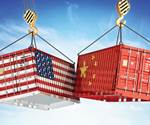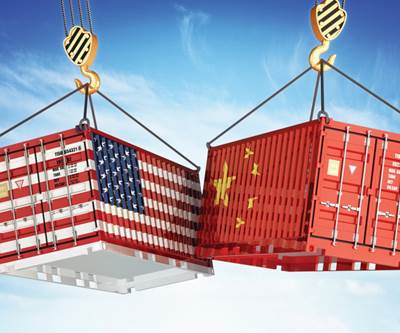The value of the American dollar needs more attention. Sure, President Trump tweets about it (along with interest rates) from time to time, but what does that conversation mean to our manufacturing community?
It means plenty. If the dollar is overly strong — as it has been for most of the past 20 years — it can dampen U.S. exports and make imports cheaper in the American market. We’ve seen those trends reflected in the data; the U.S. share of global exports has dropped over the past two decades, and import penetration into American markets has increased. That means American manufacturers aren’t selling as much as we should abroad and face more import competition than we should be here at home.
So we know there’s a problem, but before we dive into how to fix it, let’s talk about how we got there. For years, our economic policymakers in every administration, Democratic and Republican, have supported a “strong dollar” policy. There’s a structural reason why that’s the case: the U.S. dollar is essentially the world’s reserve currency, and a strong dollar has powerful constituencies from Wall Street banks to big-box retailers that stock their shelves with imports.
Some economists have called it the world’s most protectionist trade policy tool. Others say it’s one of the biggest contributors to our trade deficit with China. Others still tie it to the loss of millions of American manufacturing jobs.
A strong dollar sounds good. Who wants weakness, after all? However, a dollar that is overvalued can mean trouble for the goods-producing sector of our economy. There are a few issues at play here, and all effect exchange rates.
First, the policies our Treasury Department and Federal Reserve Board are setting on interest rates, borrowing and the money supply. Those are complex problems to manage, and one feature of our public system of finance is that it's designed to be separated a bit from pressure from Congress or the president.
Second, the currency policies of foreign governments. This is a significant issue, too. There is no question that over time, countries such as Japan, South Korea, China and others have kept their currencies artificially low to gain an advantage in trade, resulting in export-led growth and massive trade surpluses. This is known as “currency manipulation,” and it has harmful effects on American manufacturing and jobs.
And so the question becomes, what to do about this? It’s been exceptionally difficult to hold these countries accountable, and some analysts even deny there’s still a problem. Defenders of the status quo argue that countries like China are no longer manipulating their currencies to discount the price of their goods in the global market. And while it is true that China takes an occasional break from undervaluing its currency, manipulation has been its habit over the past two decades. Some economists have called it the world’s most protectionist trade policy tool. Others say it’s one of the biggest contributors to our trade deficit with China. Others still tie it to the loss of millions of American manufacturing jobs.
It’s for these reasons that Congress is roused every few years to consider a rule that would punish countries for artificially depressing their currencies. An anti-currency manipulation bill beat a Senate filibuster in 2011, and another passed the House of Representatives with more than 300 votes in 2010. None of those currency bills has ever made it to the president’s desk because every time, the “we’ll cause a trade war” notion comes up.
A strong dollar sounds good. Who wants weakness, after all? However, a dollar that is overvalued can mean trouble for the goods-producing sector of our economy. There are a few issues at play here, and all effect exchange rates.
Yet every time, China has responded by letting its currency rise closer to its natural equilibrium. It would appear that threats of legislative or policy action work. In the 2016 campaign, candidate Trump took dead aim at China’s perennial currency undervaluation. Trump vowed to designate Beijing as a currency manipulator early in his presidency. However, it took more than two years for President Trump to make good on his promise, and even then, there have been no direct consequences yet for Beijing.
Instead, what the president has done is impose tariffs on a massive amount of Chinese imports. It’s a necessary step, given the egregious list of predatory practices — including hacking, espionage, and cyber theft — documented in a lengthy trade investigation of China’s state-owned enterprises. Here’s the problem, though: Since April 2018, Beijing has reduced the value of its currency by 10% against the dollar, and that has more than offset most of President Trump’s tariffs. As a result, the U.S. trade deficit with China hasn’t dropped significantly. Calling the Chinese government a currency manipulator is one thing. Making that label have consequences is another.
For More Information
Scott N. Paul is president of the Alliance for American Manufacturing
Alliance for American Manufacturing
202-695-8112 / espaul@aamfg.org / aamfg.com
Related Content
Making Mentoring Work | MMT Chat Part 2
Three of the TK Mold and Engineering team in Romeo, Michigan join me for Part 2 of this MMT Chat on mentorship by sharing how the AMBA’s Meet a Mentor Program works, lessons learned (and applied) and the way your shop can join this effort.
Read MorePredictive Manufacturing Moves Mold Builder into Advanced Medical Component Manufacturing
From a hot rod hobby, medical molds and shop performance to technology extremes, key relationships and a growth strategy, it’s obvious details matter at Eden Tool.
Read MoreThe Trifecta of Competitive Toolmaking
Process, technology and people form the foundations of the business philosophy in place at Eifel Mold & Engineering.
Read MoreTackling a Mold Designer Shortage
Survey findings reveal a shortage of skilled mold designers and engineers in the moldmaking community, calling for intervention through educational programs and exploration of training alternatives while seeking input from those who have addressed the issue successfully.
Read MoreRead Next
How Smart Manufacturing Impacts Moldmaking
As the Internet of Things and 5G enable the creation of smart factories, manufacturers must prepare for the benefits and inherent risks.
Read MoreThe Impact of International Trade Policy on Mold Manufacturing
The first step to impacting policy decisions is staying current with issues such as the U.S.-Mexico-Canada Agreement and U.S./China negotiations.
Read MorePublic Policies Needed to Maintain a Skilled Workforce
Expanded tuition assistance, increased apprenticeship programs and improved industry partnerships will keep the labor pool deep.
Read More.jpg;maxWidth=970;quality=90)













.jpg;maxWidth=300;quality=90)








.jpg;maxWidth=970;quality=90)